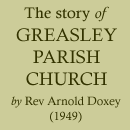The History of Greasley
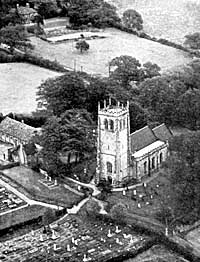
The Church, Vicarage, Verger's house and Church Hall as seen from the air.
THE late Arthur Mee in his book on Nottinghamshire makes this statement:
"Greasley's great days are gone, but reminders of them are still to be seen." Certainly in the 14th century Greasley was a parish of considerable importance, for one of the Cantelupes settled here. They were a famous and powerful Norman family; William de Cantelupe the first Baron, was King John's steward and sheriff of Warwick, Leicester, Worcester, and Hereford.
His eldest son William, the second Baron, followed his father's footsteps and became steward to King Henry III., while Walter, the second son, was made Bishop of Worcester in 1237.
Thomas de Cantelupe, son of the above-mentioned William, second Baron, became Lord Chancellor of England in 1265, and Bishop of Hereford in 1275. He was canonized by the Pope as St. Thomas of Hereford in 1320.
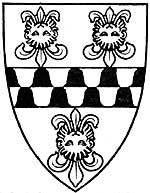
Nicholas de Cantelupe
NICHOLAS DE CANTELUPE.
Other Cantelupes rose to high office in Church and State, and one of the most distinguished of them was Nicholas de Cantelupe, Lord of Ilkeston in Derbyshire and Greasley in Nottinghamshire, a man of great wealth, a fearless warrior, friend and confidential servant of King Edward III. He was knighted in 1326, and in 1340 obtained the King's permission to fortify his manor house adjoining the church, which then became Greasley Castle.
To-day, a farmhouse stands on the site but fortunately, the name has been preserved for it is known as Greasley Castle Farm.
In the outbuildings are remains of the old castle wall which, with traces of the moat, can easily be seen from the main road.
Besides being a loyal and trusted friend of the King and a distinguished soldier (he attended Edward III. at the Battle of Crecy in 1346), Nicholas de Cantelupe was also a deeply religious man and a generous benefactor of the Church.
He founded a chantry in Lincoln Cathedral, and on December 9th, 1343, a monastery in the beautiful vale (Beauvale) in his park of Greasley (High Park).
BEAUVALE CHARTERHOUSE.
The monastery was for a Prior and twelve monks of the Carthusian Order, to which he gave land and rents in the parishes of Greasley and Selston and the advowsons of the churches of these two parishes.
The founder says he did this "for the glory of God and the increase of religion and Divine Worship, and for the good and healthful state of King Edward III., and of Archbishop Zouch of York, his most dear lord and cousin . . . . of himself and Joan his wife, and William his son and heir, while they should live and for their souls when they should die, and for all his ancestors and heirs."
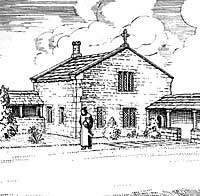
THE CARTHUSIAN MONKS.
The Carthusian Order was founded by St. Bruno in 1084 at Chartreuse, where their monastery can be seen to-day.
St. Bruno was shocked by the worldliness of some members of the Church and was convinced that any true practice of religion involved a complete renunciation of the world. Consequently, the Order which he founded had a system of discipline so strict that only comparatively few men could submit to it. At any rate, very few Englishmen were attracted to the Order, and only nine Charterhouses were established in this country, Beauvale Priory being one.
A Carthusian lived his life in absolute silence and in solitary confinement; he had separate apartments in the monastery comprising four small cells—a living-room, study, bedroom, and workshop—and a small garden which he cultivated to provide himself with vegetables.
He met the prior and his eleven fellow monks only in the monastery chapel for the Church's services, and in the refectory on Sundays and Saints' Days when a frugal meal was taken in common, but in silence.
The life was hard and austere and was kept up until death, when the monk would be buried within the precincts of the Priory.
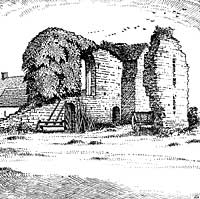
THE DISSOLUTION OF BEAUVALE PRIORY.
The Beauvale Charterhouse continued for nearly two centuries, and except for the sound of the singing of the services which the village people might hear as they approached, there was perpetual silence.
The end of the Priory makes sad reading: when King Henry VIII. broke with Rome and repudiated the Pope, it was decreed that allegiance must be transferred from the Pope to the King. This edict was naturally resisted by the religious Orders, and quite possibly with more determination by the Carthusians.
The Prior of the London Charterhouse, the Prior of Beauvale (Robert Lawrence), and another Carthusian were charged with High Treason and executed at Tyburn on May 4th, 1535, possibly as a deterrent to other rebels and in the hope of breaking up all further opposition from the religious Orders.
The Priory at Beauvale rapidly declined and the last Prior, Thomas Woodstock, surrendered the monastery to the King on July 18th, 1540.
To-day, only a few ruins remind us that here once stood a fine and dignified Charterhouse. In 1908, excavations were carried out on the site and much interesting information was gained.
